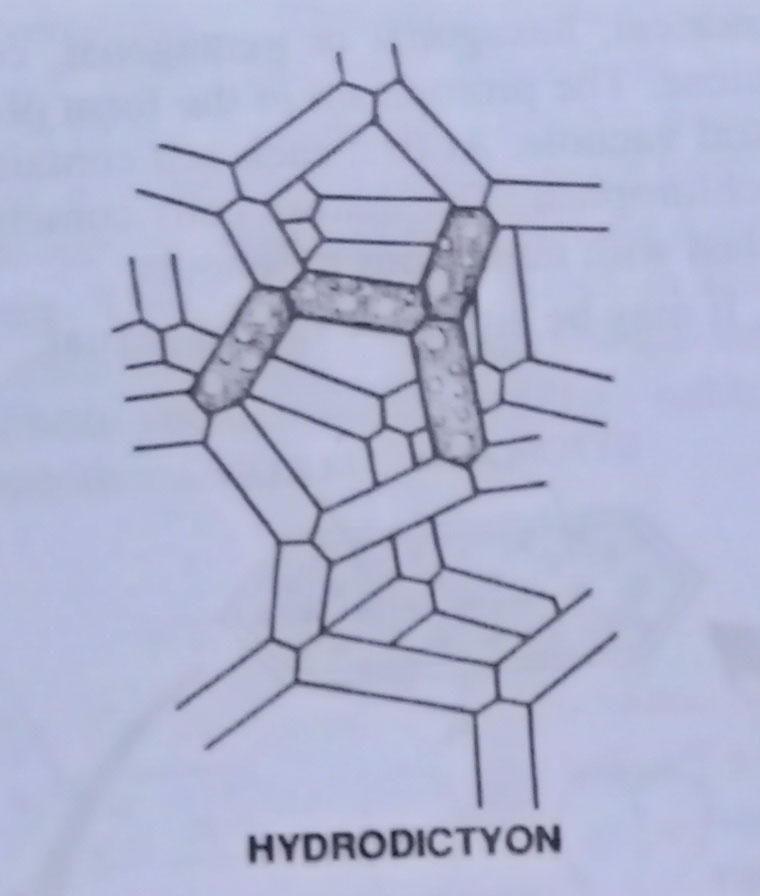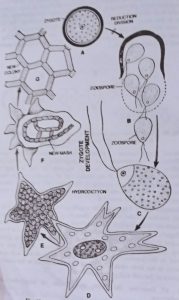Q.3. Give an account of life cycle of hydrodictyon.
Ans.3. Hydrodictyon is a common, fresh water algae, which occurs in great masses in slit freshwater of pound and in rice field. This is of world-wide distribution and is found in various localities in the Punjab, Uttar Pradesh and other states of India. H. reticulatum and H. indicum are common Indian species.

Structure: These are the most remarkable and beautiful free floating, fresh water plant colonies. The coenobium is usually in the form of a cylindrical or sieve like mesh closed at both ends and may attain a length of 20 to 30 cm. It consists of a few hundreds to several thousand cells depending upon species. The components cell united by their ends, to form as a rule, from three to six angled meshes of the net. So each mesh usually consists of six cells and centre is left hollow.

Each cell is cylindrical, hexagonal or pentagonal, coenocyte having a firm cell wall of cellulose. The protoplasm in the form of premordial utricel enclosing a large central vacuole. At first each cell contains a single nucleus parietal chloroplast. The mature cells contain numerous nuclei and reticulate chloroplast with numerious pyrenoids.
Reproduction: It may be either asexual or sexual.
Asexual Reproduction: This takes place by means of zoospores. The zoospores which are uninucleate are formed as a result of progressive cleavages in any cell of the coenobium. They are produced in large number. The zoospores never get liberated. They swim for some time inside the mesh but finally their movement stops and they assume a compact form. The cilia are lost at this stage. They arrange themselves in three directions but in a single row. Now, each cell secretes its own wall and elongate dorming a hexagonal mesh. These young colonies are later onliberated from the parent mesh and lad independent life.
Sexual Reproduction: Hydrodictyon is homothallic and sexual reproduction is of isogamous type. The isogametes are tiny, uninucleate, biflagellate structure produced in large numbers by the division and redivision of the protoplast of any mature cell of coenobium. The mature gametes escape through an opening in the parent cell wall. The liberated gametes swim about for some time and then fuse in pairs to form a zygote. The zygote secrets a wall around it.
Germination of Zygote: The zygote undergoes a period of rest and then its nucleus divides mitotically (Reduction division). In this way for zoospores are formed which are uninucleate and biflagellate. On liberation their flagella are lost. The zoospore come to rest and enlarges in size forming polyhedral shaped cell.

The large polyhedral cells undergo further divisions forming numerous uninucleate biflagellate zoospores which are never liberated to the outside. After sometimes they come to rest and arrange themselves in the form ofnet. The yound nets are liberated to the oustide by the rupture of the cell wall of polyhderal cell.